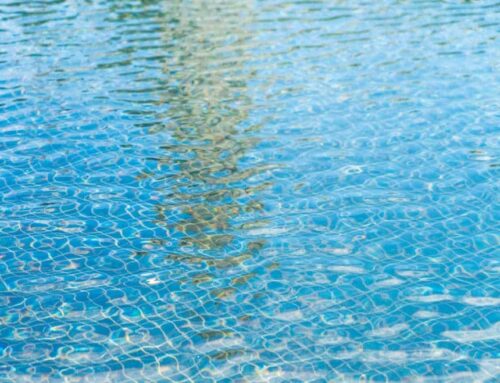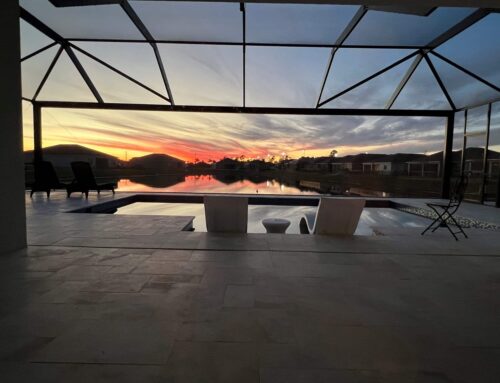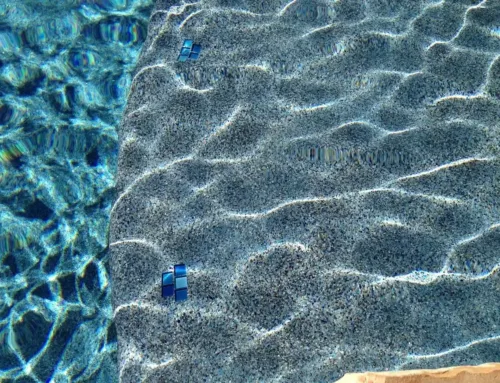When it comes to resurfacing your pool, the key to achieving a flawless finish lies in the preparation process. Hydro-blasting is a cutting-edge technique that has revolutionized the way pools are resurfaced. Unlike traditional methods, hydro-blasting offers a clean, effective, and efficient way to remove old surfaces and prepare your pool for a brand-new finish. Whether you’re upgrading your pool’s aesthetics or addressing surface damage, hydro-blasting is the superior method for ensuring long-lasting results.
In this article, we’ll explain how hydro-blasting works, why it’s the preferred method for pool resurfacing, and the many benefits it offers over other surface preparation techniques like sandblasting and over-lamenting.
1. What Is Hydro-Blasting and How Does It Work?
Hydro-blasting, also known as high-pressure water blasting, is a surface preparation technique that uses a powerful jet of water to remove old plaster, grout, or other materials from the pool surface. The high-pressure water (often up to 40,000 PSI) is directed at the pool’s surface, stripping away the existing finish and debris to leave behind a clean and roughened surface ready for resurfacing.
- How It Works: A specialized hydro-blasting machine delivers a high-pressure water jet to the pool’s surface. This process removes old finishes and opens up the pores of the concrete or gunite surface, ensuring a stronger bond for the new surface material. The debris and removed material are flushed away, making the entire process cleaner than traditional methods.
- Benefit: The roughened surface created by hydro-blasting ensures a superior bond between the new finish and the pool shell, which helps prevent peeling or delamination of the new surface.
2. Why Hydro-Blasting is the Preferred Method for Pool Resurfacing
Hydro-blasting is quickly becoming the method of choice for pool resurfacing, and for good reason. Below are some key reasons why homeowners and pool professionals alike prefer hydro-blasting over traditional surface preparation methods.
A. Superior Bonding
The high-pressure water used in hydro-blasting opens up the pores of the pool’s surface, allowing the new resurfacing material (such as plaster, pebble, or aggregate) to adhere more effectively. The result is a stronger, longer-lasting bond that ensures the new surface will remain intact for many years to come.
- Benefit: Hydro-blasting eliminates the chances of the new finish lifting or peeling, which is a common issue when surface preparation is inadequate.
B. Faster and More Efficient
Compared to traditional methods like sandblasting or over-lamenting, hydro-blasting is a faster and more efficient process. Sandblasting, for example, can take longer and create more dust, which increases cleanup time. Hydro-blasting, on the other hand, uses water to clean the surface, reducing the amount of dust and debris generated.
- Benefit: Faster process means quicker turnaround times for homeowners and less disruption to your backyard.
C. Cleaner Process
Hydro-blasting is much cleaner than other methods like sandblasting or abrasive cleaning, as it doesn’t leave behind harmful dust or debris. With sandblasting, for example, the abrasive materials can scatter around your property, requiring extensive cleanup afterward. Hydro-blasting uses water to flush away debris, keeping the surrounding area cleaner and more controlled.
- Benefit: The clean nature of hydro-blasting reduces the amount of post-job cleanup and minimizes the environmental impact of the resurfacing process.
3. The Differences Between Hydro-Blasting and Other Surface Preparation Methods
While hydro-blasting is a superior method for pool resurfacing, it’s important to understand how it compares to traditional methods like sandblasting and over-lamenting.
A. Sandblasting
Sandblasting uses abrasive sand particles to remove old pool finishes. While this method can be effective, it generates a significant amount of dust and debris, which can be harmful to both your property and the environment. Additionally, sandblasting doesn’t always provide as clean and effective a bond for the new surface as hydro-blasting.
- Comparison: Hydro-blasting is cleaner, quicker, and creates a superior bond for new pool finishes compared to sandblasting.
B. Over-Lamenting
Over-lamenting involves applying a new layer of plaster over the old surface, rather than removing it. This can be a cheaper, less invasive option, but it doesn’t address any underlying issues with the pool’s structure. Over-lamenting can lead to problems like delamination, where the new surface doesn’t bond properly with the existing material.
- Comparison: Hydro-blasting completely removes the old surface, ensuring a cleaner, longer-lasting bond between the new and old pool surfaces. Over-lamenting, while less expensive, can result in future issues if the old surface isn’t fully removed.
C. Hydro-Blasting vs. Traditional Methods Summary:
| Method | Duration | Cleanliness | Bond Strength | Effectiveness |
| Hydro-Blasting | Fast and efficient | Very clean (water-based) | Superior bond | Best overall method |
| Sandblasting | Slower, requires more time | Messy (dust and debris) | Moderate bond | Good but less effective |
| Over-Lamenting | Moderate (adds new layer) | Moderate (depends on finish) | Poor bond (delamination risk) | Can be temporary solution |
4. The Benefits of Hydro-Blasting for Pool Resurfacing
Hydro-blasting offers numerous benefits when preparing your pool for resurfacing:
- Superior Bonding: By opening up the pool surface’s pores, hydro-blasting ensures the new surface material bonds more effectively, resulting in a longer-lasting finish.
- Time-Efficient: With faster execution than sandblasting or over-lamenting, hydro-blasting helps reduce project time and costs.
- Cleaner Process: Hydro-blasting uses water to clean the surface, creating minimal dust and debris and reducing the mess and cleanup required.
- Cost-Effective in the Long Run: Although hydro-blasting may be slightly more expensive than sandblasting initially, its superior bond and cleaner process often result in fewer maintenance issues and a longer-lasting surface.
5. How Hydro-Blasting Prolongs the Lifespan of Your Pool’s Surface
Hydro-blasting helps increase the longevity of your pool’s new surface by ensuring a better bond, which helps prevent the need for resurfacing sooner than expected. By thoroughly preparing the surface and eliminating the potential for delamination, hydro-blasting minimizes future repairs, making it a great investment for the long-term health of your pool.
- Benefit: Reduced maintenance costs and fewer resurfacing jobs, which saves you money in the long run.
Hydro-Blasting is the Best Choice for Pool Resurfacing
Hydro-blasting is the most effective and efficient method for preparing your pool surface for a new finish. With its ability to create a clean, roughened surface that ensures a superior bond, hydro-blasting guarantees a longer-lasting, more durable finish for your pool. Compared to other traditional methods like sandblasting and over-lamenting, hydro-blasting offers faster results, a cleaner process, and greater long-term value.
If you’re ready to resurface your pool and want the best possible results, contact Better Pools & Spas today. Our expert team is trained in hydro-blasting techniques and can help you achieve a perfect resurfacing that will last for years to come.




